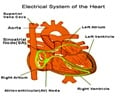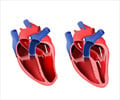Q: Who performs the cardiac catheterization?
A: A cardiologist or a radiologist performs cardiac catheterization procedure
Q: How long does a cardiac catheterization take?
A: You will be in the Cath lab for about an hour’s time at least, including preparation and the actual procedure. Several hours may be required to do catheterization as a therapeutic procedure.
Q: Can I have a cardiac catheterization if I’m allergic to dyes?
A: Most often, antihistamines and steroids can be given as a pretreatment to patients with previous allergic reactions to the contrast dye. This pretreatment should suffice in bringing down the risk of an adverse reaction to a minimum.
Q: Am I being exposed to too much radiation during this procedure?
A: Since this procedure has live X-ray imaging, patients will be exposed to a small amount of radiation. However, it is not very harmful at these levels. Doctors and staff present in the lab protect themselves by wearing lead aprons.
Q: Is there an alternative to cardiac catheterization?
A: Coronary Angiogram will remain the ‘Gold standard’ for the diagnosis of coronary arterial disease. The 64 slice CT scan is the latest investigation that helps in mapping out the vessels of the heart with accuracy. The 64 CT scan software can re-create a 3D reconstruction of the heart and all its vessels and reveal narrow areas in the coronary arteries of the heart. This is a pain-free and non-invasive test as compared to a cardiac catheterization. The test requires an injection of contrast material in the peripheral vein and capturing high resolution images of the heart in about 5 beats or in a span of 10 to 15 seconds. One will need to hold the breadth for about 15 seconds and a Beta- blocker drug maybe given to slow the heart rate for this study. The sensitivity of the 64 slice CT is 96% and specificity 89% when there is any coronary artery narrowing or stenosis. The authors who conducted the study (Mollet et. al., presentation #1054-83, ACC ‘05) comparing 64 slice CT with conventional coronary angiograms for coronary artery disease concluded that 64-channel cardiac CT can be reliably be used to detect significant coronary artery stenoses in patients with stable angina or acute coronary syndrome. This modality maybe useful in patients with low risk of disease. One must remember that 30 to 40 percent of catheterizations done in the United States do not find any significant narrowing of the coronary arteries.
The latest 256 CT scanner will not require the need for beta blockers drugs and will take the better resolution pictures than a 64 slice at lower dose of radiation. The role of CT is the emergency room for patients with chest pain to rule out pulmonary embolism, aortic dissection or acute coronary syndrome ( popularly called Triple Rule-Out) is already getting established and the newer technology are likely to help in establishing CT as the gold standard investigation for coronary artery disease.
Q: What is Brachytherapy?
A: Sometimes, a stent placed in the coronary artery can narrow because of scar tissues. With Brachytherapy, the artery is reopened with a small amount of radiation.
















